A residential building is defined by the Council on Tall Buildings and Urban Habitat (CTBUH) as a building where 85 percent or more of its total floor area is dedicated to residential use.
Residential towers vary in size and height. However, the tallest in the world is currently Central Park Tower in New York City that reaches a height of 1,550 feet (470m). There are also a number of residential skyscrapers spread across Dubai which include seven of the world’s top ten tallest buildings.
All multi storey residential buildings are required to have a number of safety features installed which includes having a suitable Emergency Voice Communications (EVC) system in place.
Emergency Voice Communication (EVC)
An Emergency Voice Communication (EVC) system’s main job is to provide two-way communication between people inside a building that need help with evacuation and the emergency services during an emergency situation. However, it can also aid in circumstances that necessitate phased evacuation.
An EVC system comprises a variety of components including disabled refuge points, fire telephones and emergency alarm systems; all combined into one, fully-integrated network.
A typical EVC system will have one central location point with a number of outstations located throughout the building. In an emergency, occupants who are disabled or use a wheelchair can then easily communicate with the central location point and other outstations to ensure they get the help they need.
Disabled Refuge
People with disabilities can sometimes have difficulty evacuating to safety. A disabled refuge provides these people with an area where it is relatively safe to congregate while they call for assistance via the EVC system.
Disable refuge points are required in all buildings in BS 9999:2017 and Building Regulations Approved Document B (Fire Safety) Volume 2: Buildings other than dwelling houses.
Fire Telephone
Fire telephones are intended to be used as an alternative to traditional radio systems that are sometimes unreliable in high rise buildings. They offer a hardwired, full-duplex communications system with battery back-up to ensure that communication is always possible in an emergency situation.
Fire telephones are required in buildings over four storeys in many parts of the world. In the UK, this is governed by BS9999. They are also required in buildings where the shape, size or type requires communication between a central control point and remote locations.
Handpicked Products for a Residential Tower

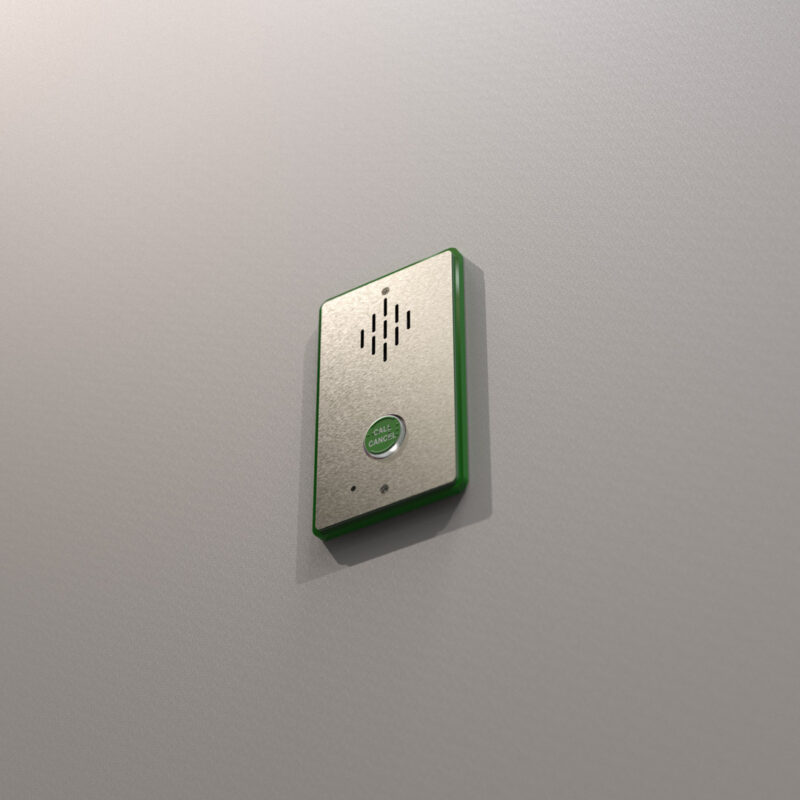
Crisis EVC systems combine disabled refuge, fire telephones and emergency assistance alarm systems into one fully-integrated, robust network providing significant cost savings. Crisis EVC offers easy installation, configuration and operation and includes compact and stylish touch-screen master stations and system expander panels to provide the perfect solution for residential towers.
The key components that are typically required for an EVC system in a residential tower include:
EVC Control Panels
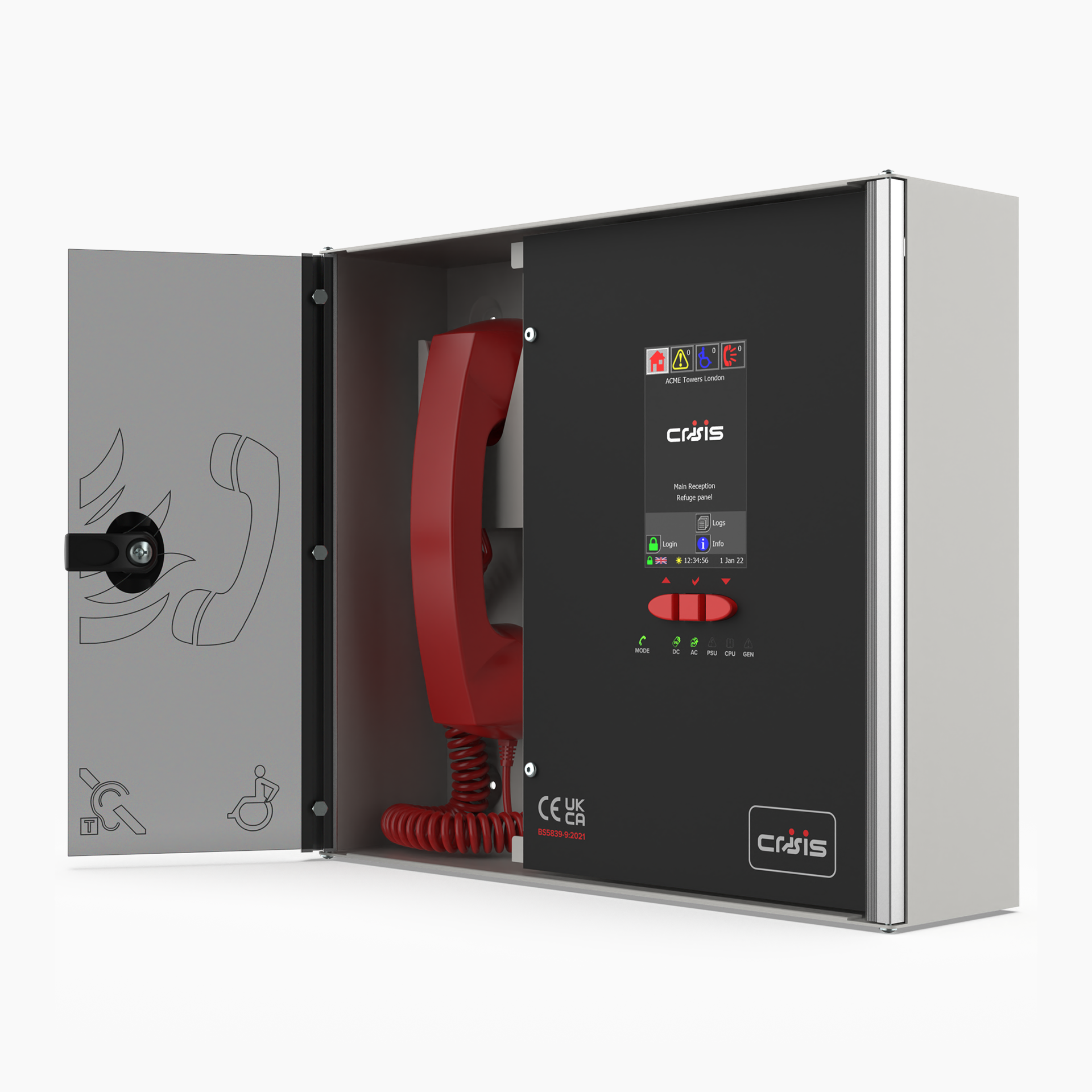
The Crisis EVC Network Master Station has a touch-screen layout with four buttons providing quick access to the main functions. The screen permanently displays the number of current calls, alarms and faults. It supports up to eight lines for outstations, including type A fixed phones, type B refuge hands free points, emergency assist call points or jack points. The Crisis Network EVC Master Station also has built-in networking allowing it to form one of the 64 panels on a Crisis network.
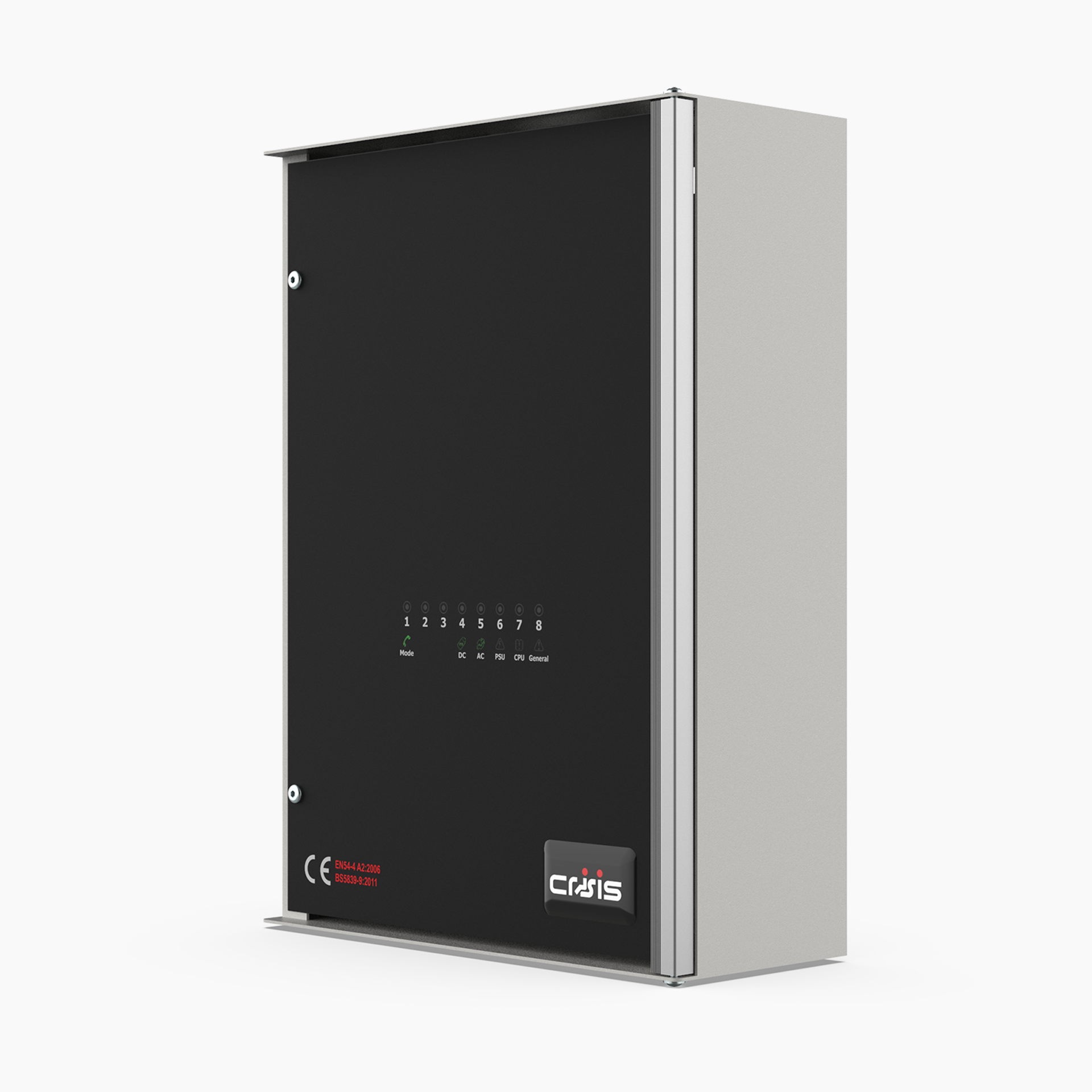
Crisis Expander Panels have in-built networking allowing them to form one of the 64 panels on a Crisis EVC network installation. A total of 512 outstations can be accommodated and the display on the front of the panel gives the current call or fault status of each line of the local panel to aid fault finding.
EVC Outstations
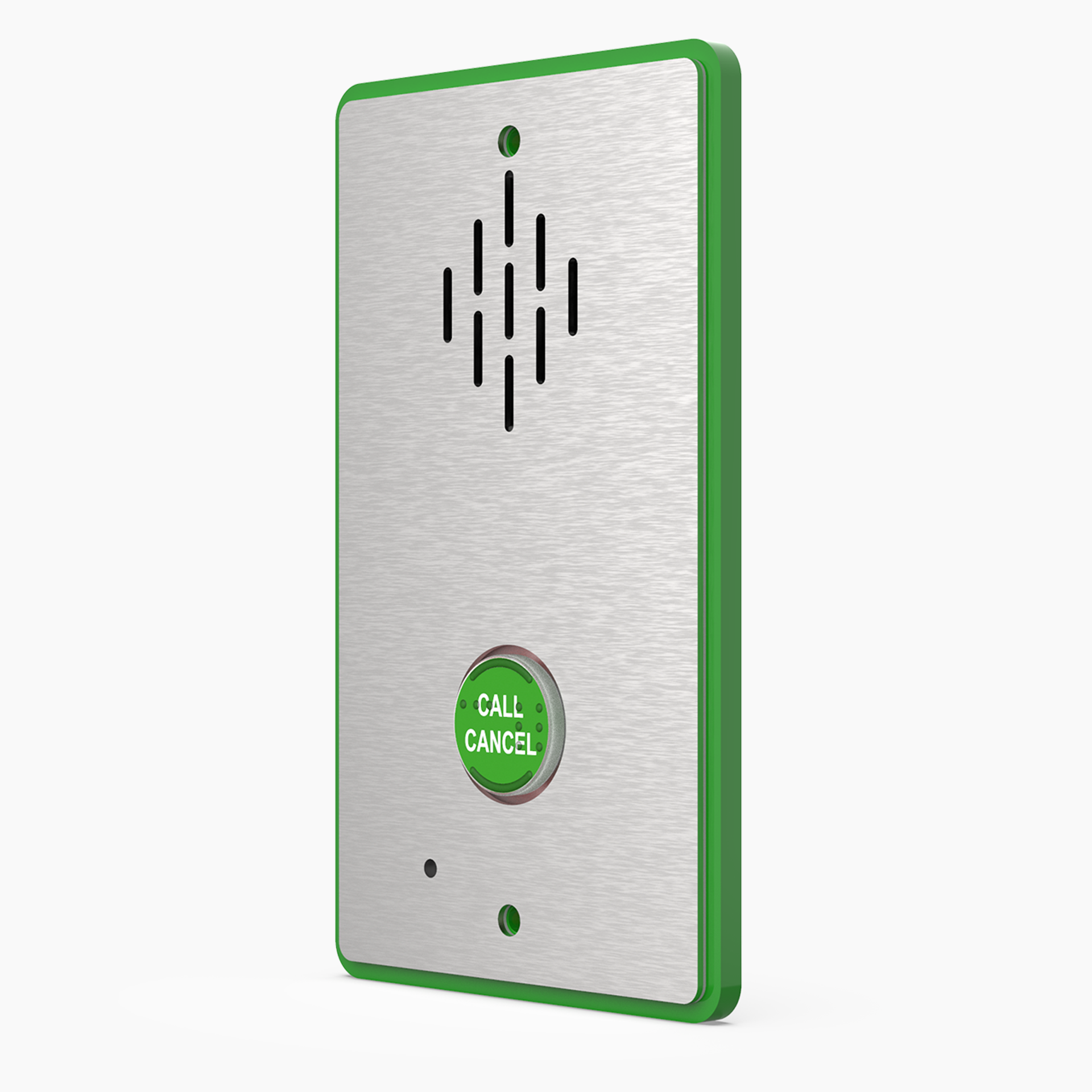
Crisis Type B Outstations are designed to be used by the public as a disabled refuge call point. Type B outstations should be placed in disabled refuge locations as described in Building Regulations Approved Document B and BS9999:2008. The Crisis Type B Refuge Outstation is compatible with the Crisis standalone and network systems. The outstation is supplied with a brushed stainless finish and a green flashing button to aid location.
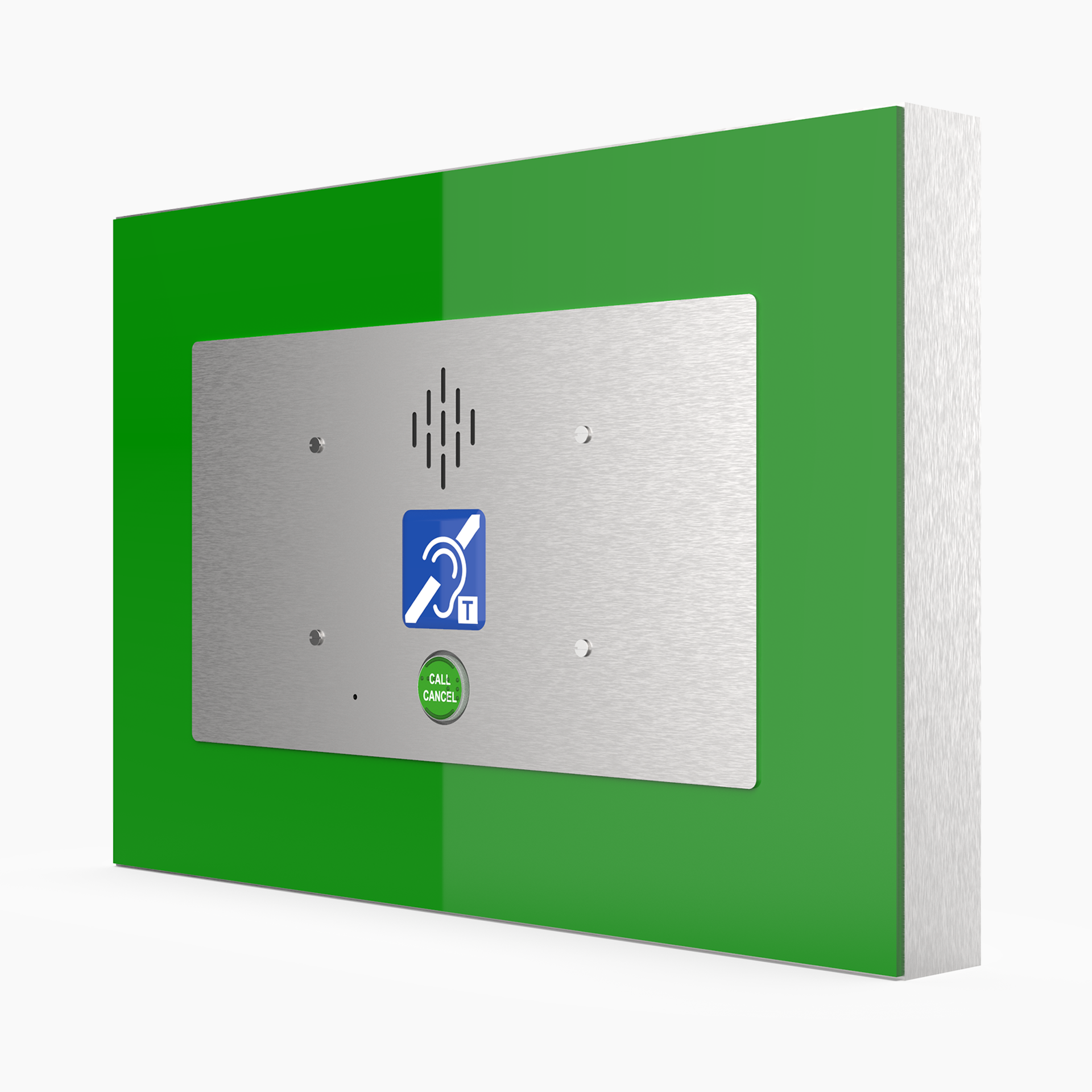
Crisis Type B Refuge Induction Loop Outstations are designed to meet the requirements of a Type B outstation but with an integral audio frequency induction loop (AFILS). The design has been optimised to produce the horizontal field as required by BS5839-9:2011, overcoming the limitations traditionally associated with a wall mounted induction loop.
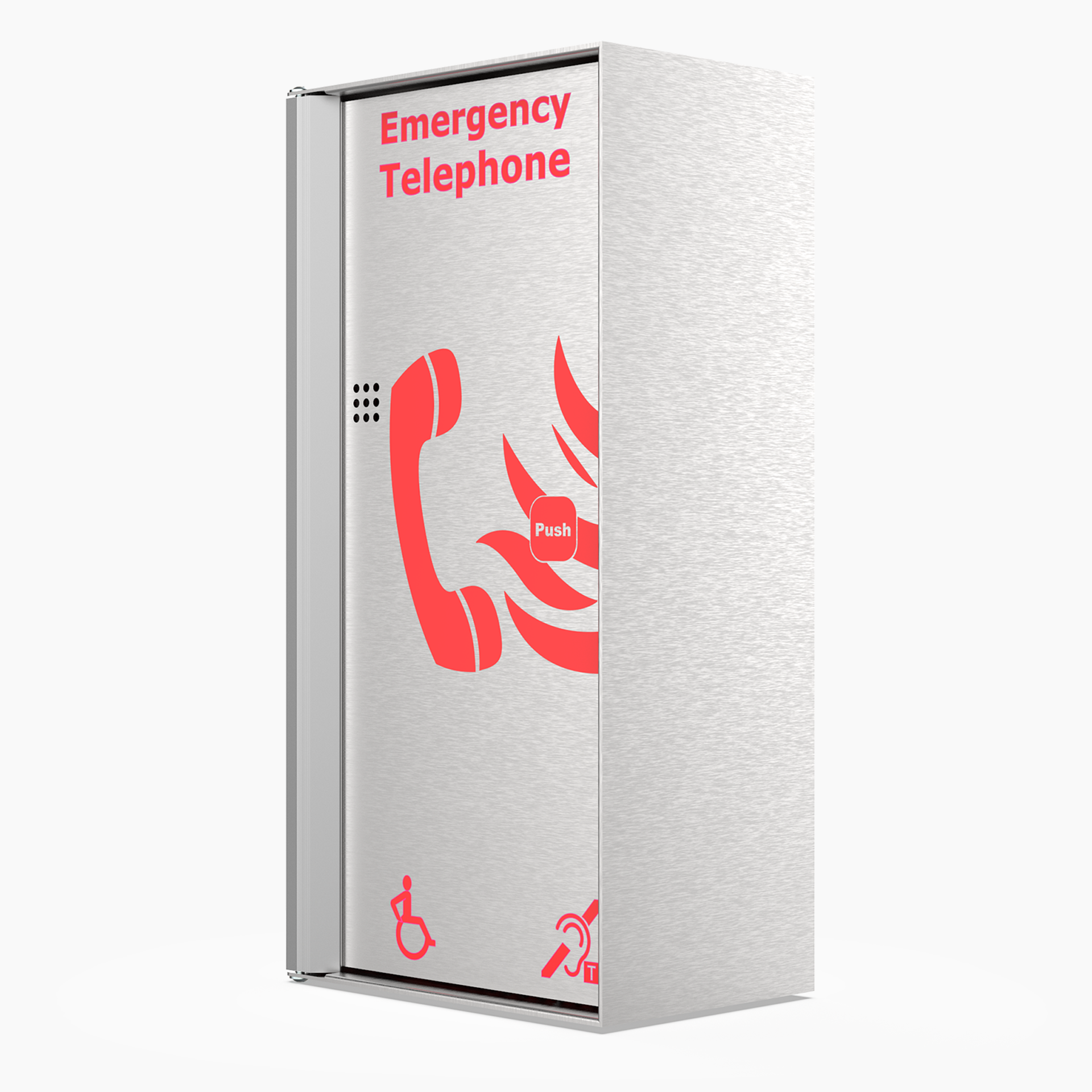
Type A outstations are mainly used by building management, fire wardens and firefighters. Crisis Type A Fire Telephones are compatible with the Crisis standalone and network systems and are supplied in a brushed stainless finish with a high contrast red screen print with a rugged red telephone handset behind the push door.
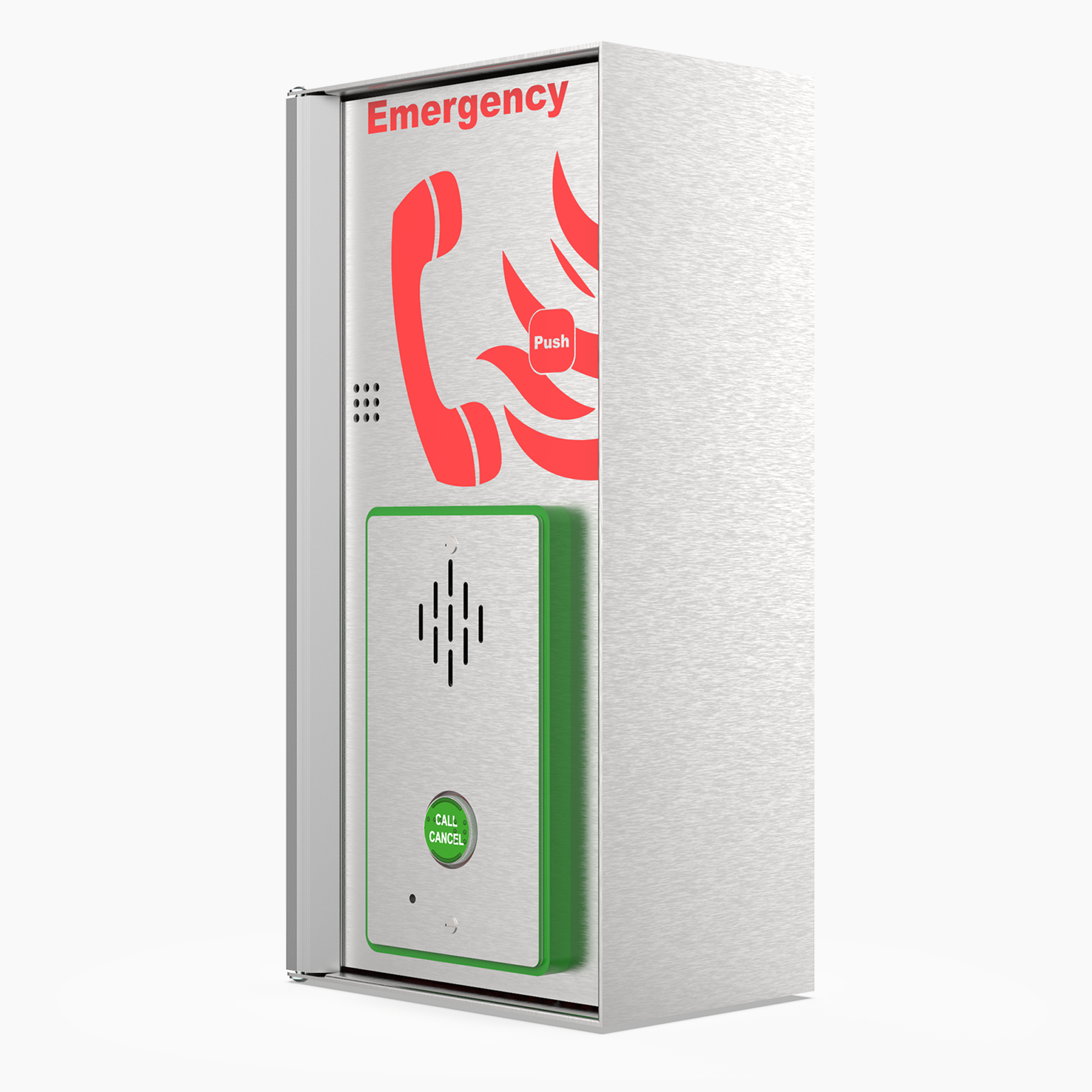
Crisis Combined Type A & B Outstations are mainly used when the disabled refuge area is located within the fire fighting lift lobby. They are also compatible with both Crisis standalone and network systems and are supplied in a brushed stainless finish with a Type B refuge panel on the front with a high contrast red screen print with a rugged red telephone handset behind the push door.
Why Choose Eurofyre?
- Complete System Supplier
- Eurofyre manufactures and supplies all aspects of fire detection and its associated safety products, including Emergency Voice Communication systems, and can provide expert advice and consultation.
- Demonstration and Training
- We offer demonstrations and expert training on a range of systems, including Crisis EVC systems, in our very own sophisticated training facility.
- After-Sales Support
- Eurofyre offers both on-site and telephone support to assist you in ensuring that your system is fully functional and operating at maximum efficiency. Our after-sales care and support are second to none.
For more information about Crisis EVC systems, or to discuss any of the other products that Eurofyre has to offer, please feel free to get in touch either by phone on +44 (0) 1329 835 024, by email to sales@eurofyre.co.uk or via the online enquiry form situated on our contact page.
Don’t forget you can follow us on LinkedIn, Twitter and Facebook or sign up to our newsletter (in the footer below) to receive all the latest information from Eurofyre.